Hey baby
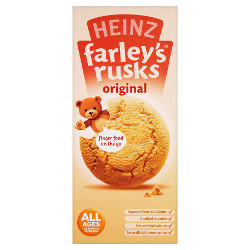
Although the birth rate remains relatively high in Ireland compared with the rest of Western Europe, the baby category has been impacted by a noticeable turning point in the demographic make-up of Ireland. The birth rate in Ireland peaked at almost 17 births per 1,000 people in 2009, and has declined since. Despite this, the baby category remains a highly lucrative one for retailers as Fiona Donnellan reports
10 July 2013
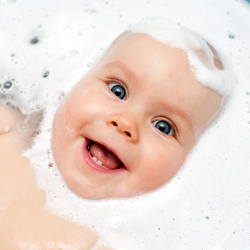
AT A GLANCE: BABY
- The global baby food and infant formula market is expected to hit almost $24 billion by 2015 (Source: Global Industry Analysts)
- The US, the EU and Asia-Pacific combine to represent over 80% of the overall market
- Baby foods and infant formula products fare well in economic downturns as an essential rather than luxury product category
- The global disposable diaper industry is expected to exceed $33 billion by 2017 (Source: Global Industry Analysts)
- The global baby care product industry caters to around 4 million babies on a yearly basis, generating retail revenue of nearly $7 billion (Source: Report Linker)
- The baby care market encompasses different segments, which can be divided into: toys, feeding accessories, wipes, disposable diapers, body care products and soothers
- The birth rate in Ireland is the highest in the EU at 16.2%
- With the average age of mums rising, it’s likely that older parents will have greater disposable income to spend in this category
- Danone remained the clear leader in baby food in 2012 with a value share of 53%. The company’s commanding lead was mainly due to the strength of its Cow & Gate, Aptamil and Milupa brands, which ranked first, second and sixth in the category respectively in 2012 (Source: Euromonitor, November 2012)
- One in every five children on the planet is fed infant or toddler milk that is made in Ireland (Source: Danone)
- Ireland is now the source of 60% of Danone’s global volume for milks and employs 572 directly in Ireland and over 1,000 indirectly
- Own-label activity has been particularly strong in the baby wipes category, with a number of new launches in 2012 (Source: Mintel, Feburary 2013)
- Johnson & Johnson Ireland Ltd continued to lead baby and child-specific products in 2011, with a 47% value share of retail sales (Source: Euromonitor, July 2012)
Market research on the baby category in Ireland has shown that the industry remains steady despite the falling birth rate in the country. On a global scale, the baby food and infant formula market industry is expected to generate up to $24 billion by 2015. There has been a number of new product launches within this category although the market leaders are well established, recognised and trusted brands.
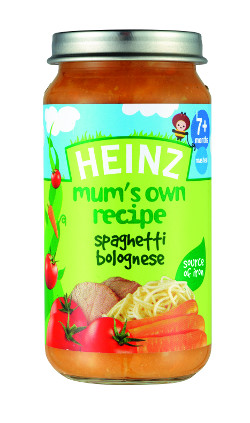
Mum’s own recipes
Heinz has been taking care of little appetites for generations with its comprehensive baby food range offering everything parents need for baby from Heinz Mum’s Own Recipe jars and trays, rusks, baby cereals, juice, potted fruity custard desserts and the Heinz Cook at Home range. The highly successful Heinz Mum’s Own Recipe range is a unique concept in that all the varieties are based on recipe suggestions that Heinz has gathered from real mums. The range comes in bright, eye-catching packaging and offers a number of varieties across all age stages for breakfast, savoury and dessert. Heinz Mum’s Own Recipe offers some of the most popular recipes across all age stages so baby can enjoy his/her favourites such as Cottage Pie, Spaghetti Bolognese and Sunday Chicken Dinner for longer.
Heinz Fruity Desserts are a blend of creamy custard or yogurt with fruit puree to create varieties such as Fruity Custard, Fruit Medley and Fruity Yogurt Banana. The range is suitable for all ages from four to six months and each pack contains four 100g servings in a convenient plastic pot complete with a re-closable lid making it the ideal dessert or snack solution at home or on-the-move.
Heinz Farley’s Rusks are available in packs of nine or 18 and are rich in calcium, iron and vitamins. The rusks contain no added colours, flavourings or preservatives. Heinz Rusks are also available in Reduced Sugar and Gluten-free varieties. The Heinz Farley’s cereals range is ideal for breakfast or dessert. The range includes Sunrise Banana Cereal and Strawberry Yogurt and is available in 125g packets. Heinz Organic Biscotti is a biscuit finger which has been specifically designed to fit in the hands of babies from nine months onwards. With 12 individual biscuits per pack, Heinz Organic Biscotti is the perfect snack for mums and toddlers up to 36 months.
The range of Heinz Baby Juice remains popular with consumers. Varieties such as Mixed Berries and Apple Juice with Spring Water and Pear Juice with Spring Water come in convenient 750ml packs. Due to the popularity of the range, Heinz has launched two of the most popular flavours in 150ml packs; Apple and Blackcurrant Juice with Spring Water and Apple Juice with Spring Water. The new smaller packs make the juices ideal for when baby is on-the-move.
Securing the best health for baby
Good nutrition in the first 1,000 days, from pregnancy to two years of age, offers parents a unique window of opportunity to secure the long-term health and development of their baby. A growing body of research indicated that getting nutrition right for infants and toddlers can ensure a lifetime of good health; a reduced risk of obesity and heart disease; and improved reading, writing and math skills. Danone Baby Nutrition with its advertising partners Havas Worldwide Dublin developed communication to drive awareness of the importance of nutrition in the First 1,000 Days movement.
The First 1,000 Days was launched in June and involved a national advertising campaign, a new website, digital communication and the publication of a colourful First 1,000 Days 132 page recipe book. Jaime O’Shea, marketing director at Danone Baby Nutrition, says: "We believe that we have a responsibility to raise awareness of the importance of nutrition at this critical time. It is our intention to positively communicate the simple measures that mums-to-be and parents can adopt in order to optimise their child’s health and guarantee long-term benefits."
Baby’s taste test
The Blas na hEireann, National Irish Food Awards, which are supported by Invest NI and Andrew Ingredients, has announced that there will be a special category for baby food at this year’s competition which will take place at the Dingle Peninsula Food Festival from 4 – 7 October. This is as a result of a new sensory analysis programme which the Food Science Department of UCC has developed specifically to judge the taste and quality of baby food.
"This is an entirely different system of evaluation than the one used for other food products as quality baby food typically doesn’t contain ingredients such as salt and sugar for example," says Artie Clifford, chair of the National Irish Food Awards.
"There has been huge growth in this area as parents struggle with convenience versus quality in the foods that they give their babies at this vital stage of development. By creating a special category for babies and toddlers, which will be judged separately by a panel of sensory analysts overseen by professor Joe Kerry of UCC, we will recognise and reward the best tasting and most nutritious baby foods made in the country. This can help reassure parents that they are giving their "treasures" only the very best, when they are under time pressure to cook themselves."
There are over 40 categories of food products which producers can enter into the Blas Awards, ranging from chocolate to cheese, at the biggest blind tasting of Irish produce in the country. These awards have become the ultimate benchmark for quality Irish food, and the Blas Gold, Silver and Bronze logos on winning produce are eagerly sought out by shoppers. This year’s winners will be announced on Saturday 5 October.
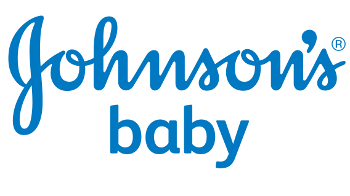
Beating babylag
Johnson’s Baby has recently released the results of a study into the rise of ‘babylag’; where parents suffer from sleep deprivation, and they make for interesting reading. The study showed 77% of new parents are suffering from sleep deprivation as they struggle to get a good night’s sleep. Dr Dev Banerjee has coined the term ‘babylag’ for the feeling of extreme exhaustion new parents can suffer as a result of not getting a night’s sleep. In fact, 44% of parents only get half the recommended eight hours of sleep while 31% are woken up at three times a night or more and 43% of parents are awake for at least an hour when they are woken up.
The Johnson’s Baby three-step routine is the first and only night time routine clinically proven to help babies sleep in just one week.
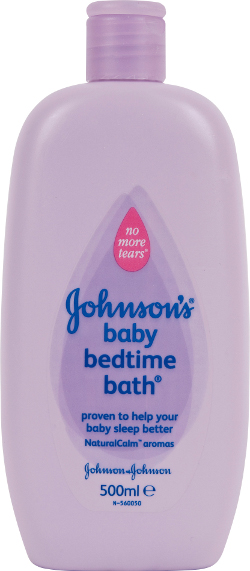
STEP ONE: Bath
Parents should start the routine by using a specially formulated baby bath product like Johnson’s Baby Bedtime Bath or Baby Bedtime Wash in a warm bath. Both products contain a patented blend of relaxing aromas proven to relax better than lavender.
STEP TWO: Massage
Massage is a great way to help babies wind down. Using Johnson’s Baby Bedtime Oil or Bedtime Cream and Bedtime Lotion can help to relax the baby.
STEP THREE: Off to sleep
After winding the baby down, some quiet time will ensure that the baby goes off to sleep in a relaxed environment.
Johnson & Johnson Ireland Ltd continued to lead baby and child-specific products in 2011, with a 47%* value share of retail sales. This strong position is largely a result of the popularity of the Johnson’s Baby brand. Johnson’s is the long-established leader in the category and it remains difficult for other players to challenge its position. It is well trusted and recognised by parents, resulting in a willingness to accept new brand variants to the Johnson’s Baby range. The full range of Johnson’s Baby products is available from your local representative.
*(Source: Euromonitor, July 2012)



 Print
Print
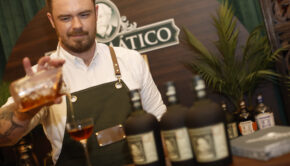
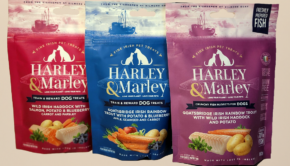
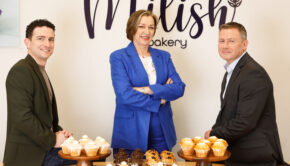



Fans 0
Followers